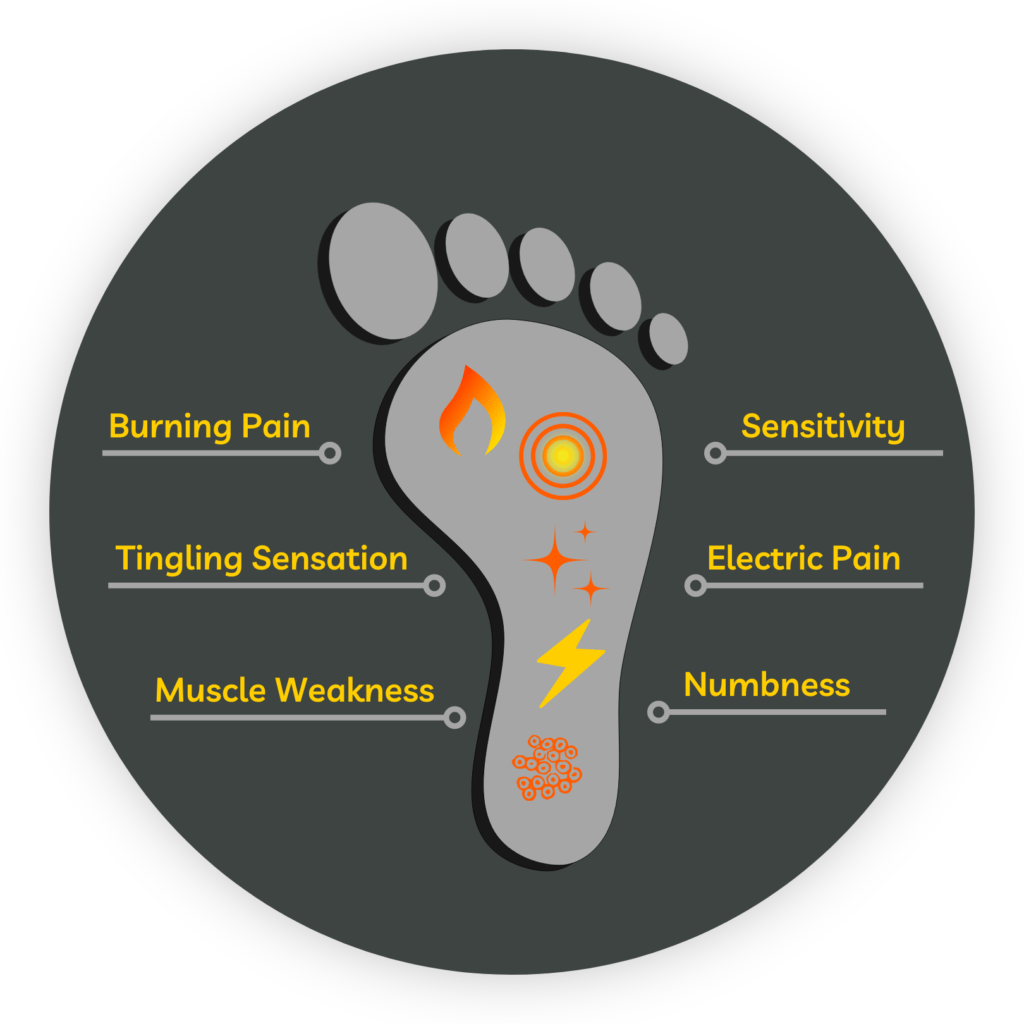June 17, 2022
Author: Jonathan Lam, PA-C
1. What Is Neuropathic Pain?
Neuropathic pain occurs when there is a dysfunction or damage to your nervous system, such as your peripheral nerves, spinal cord, or even brain. Most people feel pain with the following characteristics:
- Shooting
- Burning
- Stabbing
- Electric shock-like
- Tingling
- Numbness, or
- “Pins and needles” sensations1
Numbness, tingling, and “pins and needles” often get overlooked by patients as “pain” because of the lack of a stimulus that hurts. However, to clinicians, these descriptors also count as “pain.” Sometimes, this pain can occur without any stimulation.
There are many causes and types of neuropathic pain but we’re going to focus on diabetic peripheral neuropathy, which is one of the most common types of neuropathic pain.

2. What Is Diabetic Neuropathy?
This is the most common neuropathy in developed countries, and several large studies estimate that at least 50% of diabetic patients will eventually develop neuropathic symptoms2.
There are four main types of diabetic neuropathy: peripheral, autonomic, focal, and proximal. Peripheral diabetic neuropathy is the most common form3.
3. What Causes Diabetic Neuropathy?
Uncontrolled diabetes leads to elevated blood sugars (glucose) and fats (triglycerides) that damage the nervous system and small blood vessels, impairing oxygen and nutrient exchange to your nerves3.
4. What Are The Symptoms?
Peripheral diabetic neuropathy most commonly starts with loss of sensation or pain in the patient’s feet, or even shooting pain in the lower legs.
The pain can become chronic, which can make you more irritable, and effect your overall quality of life. This can lead to other issues such as diabetic foot ulcers, so it is important to address this with your provider or podiatrist (foot doctor) as soon as symptoms begin. A physical examination is imperative to figuring out the best treatment course for you4.
5. How Is It Diagnosed?
Step one is going to see your provider to get the ball rolling. Your provider may order blood tests, imaging exams, and nerve function tests to start. Your blood tests will check for electrolyte imbalances, diabetes (HgbA1c), vitamin deficiencies, among other conditions that may mimic your symptoms.
Imaging exams such as a CT or MRI may help look for herniated discs, pinched/compressed nerves, or tumors and could help diagnose another issue that may be presenting similarly.
Nerve function tests also help pinpoint exactly what nerves may be affected.
If your pain is found to be due to a different issue such as lumbar radiculopathy, then a pain specialist, like the team here at Genesis Medicine, may be able to help!5
6. How Is It Treated?
Treating diabetic neuropathy is often a multi-disciplinary approach, but it starts with making sure your diabetes is under control, and implementing practices like becoming physically active and following your diabetes meal plan.
Diabetic neuropathy care may involve your primary care provider, podiatrist, dietician, diabetic nursing staff, physical therapist, pain specialist, or even an endocrinologist. Your provider may also recommend oral medications to help with the pain sensations you are experiencing.
For painful and severe cases, spinal cord stimulation (SCS) has been approved for treatment of painful diabetic neuropathy.6
If you are still having pain despite conservative treatments and medications, spinal cord stimulation may be a good solution for you. Contact us to set up a consultation and we’re happy to help you navigate the best treatment plan for your pain!
Resources
- https://my.clevelandclinic.org/health/diseases/15833-neuropathic-pain
- https://pubmed.ncbi.nlm.nih.gov/8469345/
- https://www.niddk.nih.gov/health-information/diabetes/overview/preventing-problems/nerve-damage-diabetic-neuropathies/what-is-diabetic-neuropathy
- https://my.clevelandclinic.org/health/diseases/15833-neuropathic-pain
- https://www.mayoclinic.org/diseases-conditions/peripheral-neuropathy/diagnosis-treatment/drc-20352067
- https://www.niddk.nih.gov/health-information/diabetes/overview/preventing-problems/nerve-damage-diabetic-neuropathies/peripheral-neuropathy




